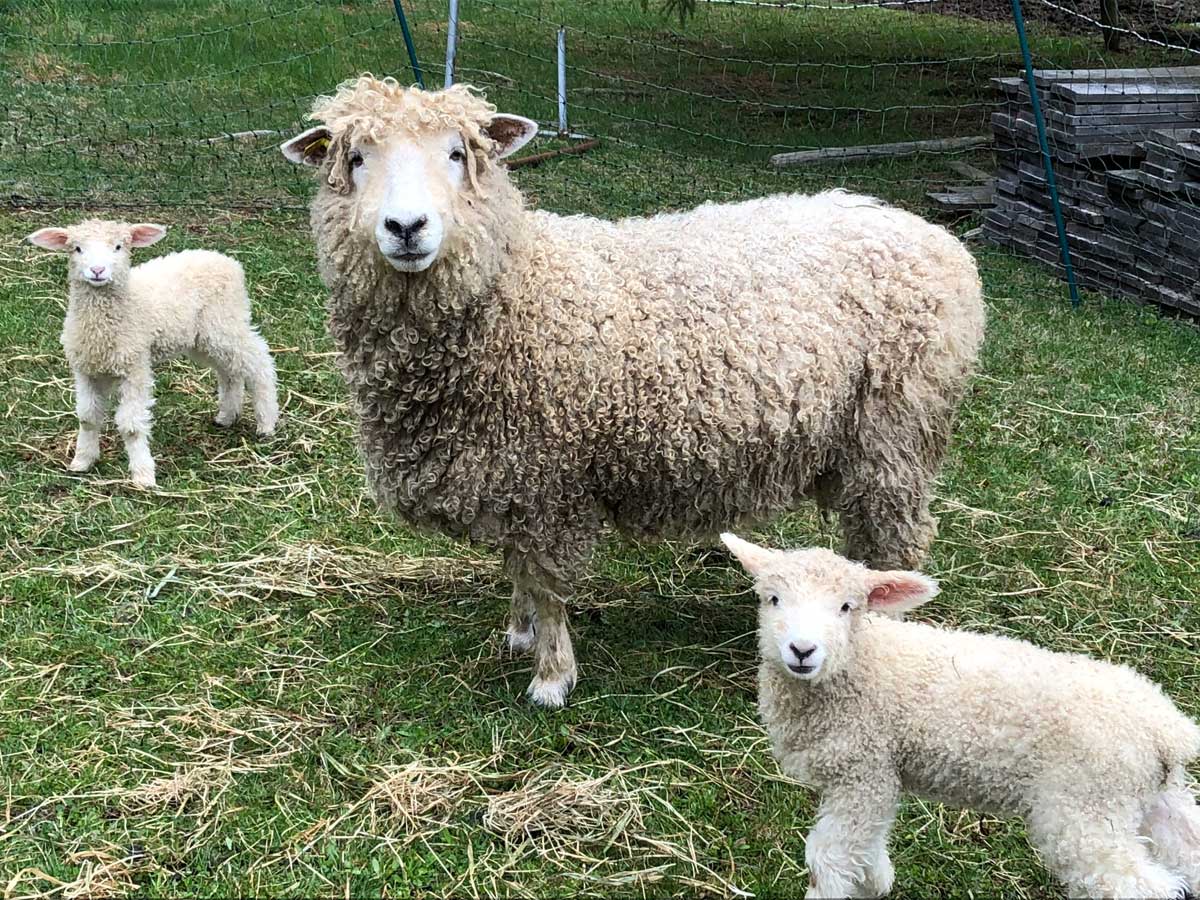Cotswolds are said to have been developed from sheep brought to England by Roman conquerors over 2,000 years ago. The name Cotswold derived from "cote," a sheep shelter and "wold,” an open rolling field. The breed was well established by the fifteenth century and became the cornerstone of England's wealth throughout the Middle Ages. The Cotswold region's economy was founded on wool and the profits funded the grand "wool churches" in the area.
Cotswolds first came to America when Christopher Dunn of Albany, New York imported a ram in 1832. Cotswolds were originally imported to cross with Robert Bakewell's Leicester sheep. Cotswolds rapidly grew in popularity and large numbers were imported over the next half century. The first notable purebred Cotswold breeder in America was Justus C. Haviland of Duchess County, New York, who established his flock in 1836. The breed grew in popularity, and in 1876 Henry Stewart wrote in his Shepherd's Manual (1876) that the Cotswold "has become so common in America, and has been bred so extensively without fresh importations of new blood, that it may well be adopted as a native sheep."
The American Cotswold Record Association, founded in 1878, was the first sheep registry established in the United States. By 1913, the United States Department of Agriculture reported 74,455 Cotswolds in the country. The Cotswold became the favored sire to cross with range Merino ewes to produce market lambs. The resulting lambs had the size of the Cotswold with the finer fleece of the Merino. They remained one of the most popular breeds until the preference shifted to smaller earlier maturing lambs and the growth of the Australian Merino wool trade.
The Cotswold has historically been a dual-purpose sheep. As is the case with other longwool breeds, their meat is mild flavored with no "gamey" taste. In recent years, handspinners have discovered the unique qualities of the wool, including its strength, length, luster, and exceptional ability to take dyes.
The Cotswold is classified as a rare breed by the Livestock Conservancy in the United States and the Rare Breeds Survival Trust in England. Throughout its history, the mission of the American Cotswold Record Association has remained the same. Since 1878, our organization has maintained the original breed standard and is committed to preserving the legacy of this historic breed.




